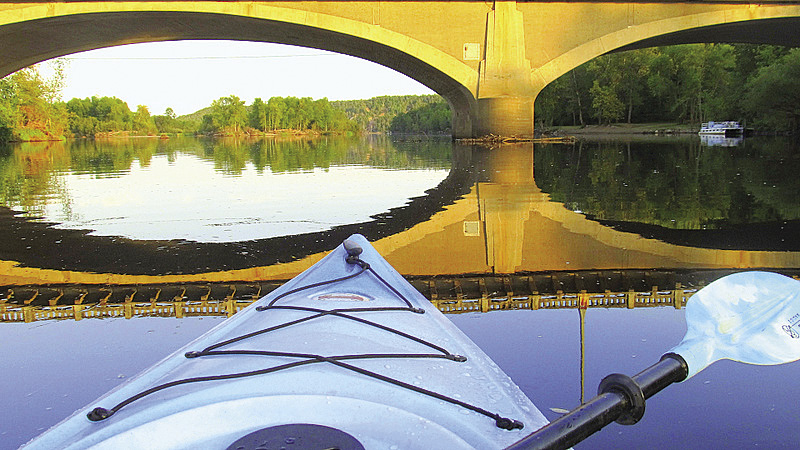Relaxing on the St. Louis. | BARB AKER
Duluth—Efforts to clean up and restore the mighty St. Louis River are showing progress.
“The projects to restore the river have a positive economic impact,” said Kris Eilers, executive director for St. Louis River Alliance, a non-profit organization that works in the community to educate people about the importance of the river and its impact on our region. “We connect people to the river so they can experience it in a personal way and create stewardship.”
The St. Louis River begins near Hoyt Lakes, Minnesota and weaves its way across St. Louis County before reaching Lake Superior at Duluth. The river’s watershed covers 3,650 square miles, making it the largest U.S. tributary to Lake Superior. The fast-moving river creates strong rapids, providing excellent whitewater rafting, canoeing and kayaking opportunities.
Unfortunately, the St. Louis has a polluted past.
The lower river was designated as the St. Louis River Area of Concern in 1987, which led to a government effort to develop a Remedial Action Plan. Part of the Alliance’s purpose is to serve as the community connection between government agencies managing the St. Louis River Remedial Action Plan and the public.
According to the Minnesota Pollution Control Agency (MPCA), the plan in progress is a road-map to remove nine impairments from the river. The plan includes action to restore shallow sheltered bay aquatic habitat and to address harmful chemicals from the past which continue to contaminate the sediments and water in the estuary. The goal is to complete major cleanup and restoration projects by 2020 and remove these impairments and the Area of Concern designation by 2025.
At one time, “industries were allowed to dump things into the river unchecked,” said Eilers. Since the Clean Water Act of the 1970s and enactment of other environmental laws, the government has taken steps to reduce pollutants in water.
In the past few years, a lot of progress has been made. One project included removing non-native material from Radio Tower Bay, which restored the bay to an optimum depth. Other projects have been to develop detailed plans and document them, including one on invasive species control in the Area of Concern, and these documents serve as an informational tool to provide efficient and expedited efforts. Another project was to research reported odors at Hog Island/Newton Creek remediation site, to ensure the area does not pose a human health or ecological risk. The MPCA has also tracked progress of oil sheen control at the U.S. Steel Site. Fish sampling and an estuary-wide bird inventory have been completed, along with a number of other projects, all with a common goal of cleanup and restoration.
Partners on the project include the MPCA, Wisconsin and Minnesota DNR, Fond du Lac Band of Lake Superior Chippewa, EPA, U.S. Army Corps of Engineers, National Oceanic and Atmospheric Administration, City of Duluth, other state, tribal and federal agencies, as well as nonprofit organizations and research institutions.
Today, funding is provided by the Great Lakes Restoration Initiative, the Minnesota Land, Water, and Legacy Amendment (Clean Water Fund and the Outdoor Heritage Fund), and other sources.
This past June, the organizations celebrated the passage of a bonding bill in which the state legislature acted to clean up 10 contaminated sediment sites in Minnesota. The bill includes $25.4 million in state funding, which will leverage about $47.2 million in Great Lakes Restoration Initiative funds from the EPA. The MPCA and EPA are also working through the Great Lakes Legacy Act on an estimated $69 million effort to clean up the Spirit Lake U.S. Steel site on the St. Louis River near Duluth.
“It’s a once in a generation opportunity,” said Eilers. “We’ve come out of an era of degradation and we are moving into an era of vitality”
To learn more, visit stlouisriver.org.

